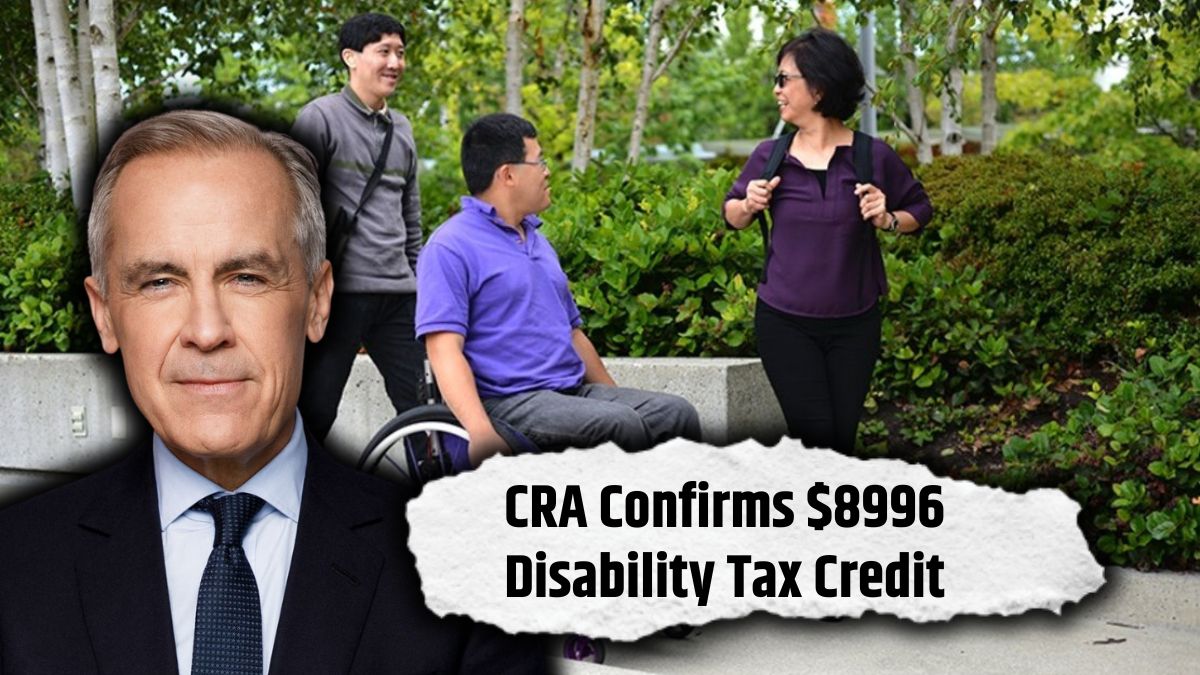The Canada Revenue Agency (CRA) has officially released its 2025 guidelines for the Disability Tax Credit (DTC), offering expanded benefits and simplified access for eligible Canadians. With the latest update, qualified individuals may now claim up to $8,996 in non-refundable tax benefits, while also gaining the opportunity to apply retroactively for additional financial relief. The new rules are set to help thousands of families better manage the financial burden that comes with long-term physical or mental impairments.
Understanding the Disability Tax Credit
The Disability Tax Credit (DTC) is a non-refundable tax credit designed to reduce the income tax burden for individuals living with disabilities or their supporting family members. It acknowledges the extra living costs associated with prolonged mental or physical impairments. While the DTC does not provide direct monthly payments, it can lead to substantial annual or retroactive tax refunds depending on one’s eligibility and income situation.
Who Qualifies for the DTC in 2025?
To qualify for the DTC in 2025, applicants must meet specific medical and duration-based criteria. The core requirement is that the impairment lasts, or is expected to last, at least 12 months and has a marked effect on daily life. Eligible conditions include:
- Physical disabilities (e.g., loss of vision, mobility issues)
- Mental impairments (e.g., autism spectrum disorder, ADHD, learning disabilities)
- Neurological and psychological conditions (e.g., PTSD, chronic anxiety)
A licensed medical practitioner must complete and certify the application using CRA’s Form T2201, detailing how the condition affects daily activities such as dressing, communicating, or walking.
What’s New in the 2025 DTC Guidelines?
The 2025 update introduces several important changes aimed at increasing access:
- Maximum benefit increased to $8,996 for eligible claimants
- Wider recognition of psychological and neurological disorders
- Simplified form submission and quicker turnaround using CRA’s online portal
- Enhanced ability to transfer unused credits to supporting family members
These updates reflect CRA’s commitment to supporting a broader range of Canadians while reducing administrative burdens during the application process.
How Much Can You Expect to Receive?
The base federal amount for the Disability Tax Credit in 2025 is $9,428. For applicants under the age of 18, an additional supplement of up to $5,500 may be available. However, the actual refund received depends on:
- Your taxable income
- Whether the credit is fully or partially claimed
- Provincial variations, as some provinces offer supplementary credits
On average, refunds range between $1,500 and $8,996 for eligible individuals. If filed correctly, this can result in a significant financial boost—especially when combined with retroactive payments.
Applying for the Disability Tax Credit
Applying for the DTC involves two key steps:
- Complete CRA Form T2201 – This form includes both applicant and medical practitioner sections. Your healthcare provider must thoroughly document how your impairment affects essential daily functions.
- Submit the form to CRA – You can send it via mail or use the CRA My Account portal for faster digital processing. Approval notices are usually issued within 8–12 weeks.
Once approved, the credit can be claimed on your income tax return. CRA will also inform you about your eligibility period, which may include past and future years.
Can the DTC Be Transferred to Family Members?
Yes, the DTC allows transferability if the individual with the disability doesn’t need the full credit to reduce their tax liability. The unused portion may be transferred to a:
- Parent or guardian
- Spouse or common-law partner
- Sibling or adult child
This option ensures that supporting family members can benefit from the credit, especially when the disabled person has little to no income of their own.
How to Claim Retroactive DTC Refunds
One of the most powerful features of the DTC is the ability to claim refunds retroactively. If approved, CRA allows applicants to:
- Request reassessments for up to 10 previous tax years
- Receive lump-sum payments based on the eligible credits for those years
- Potentially recover thousands of dollars in backdated benefits
To apply retroactively, indicate this on Form T2201 or request it after your DTC approval.
Avoiding Common Mistakes in DTC Applications
Many DTC applications are rejected due to vague or incomplete medical documentation. To improve your chances of approval:
- Ensure your medical practitioner provides specific examples of how the condition affects your daily life
- Avoid general terms like “sometimes has difficulty”—instead, use phrases like “consistently unable to perform X without assistance”
- Double-check the form for missing sections or unclear handwriting
- Use CRA’s digital portal when possible for status tracking and faster updates
Disclaimer
This article is intended for general information purposes only. Tax laws and eligibility criteria are subject to change. Always consult a certified tax professional or contact the Canada Revenue Agency (CRA) directly before applying. We are not affiliated with CRA and do not guarantee application outcomes.
